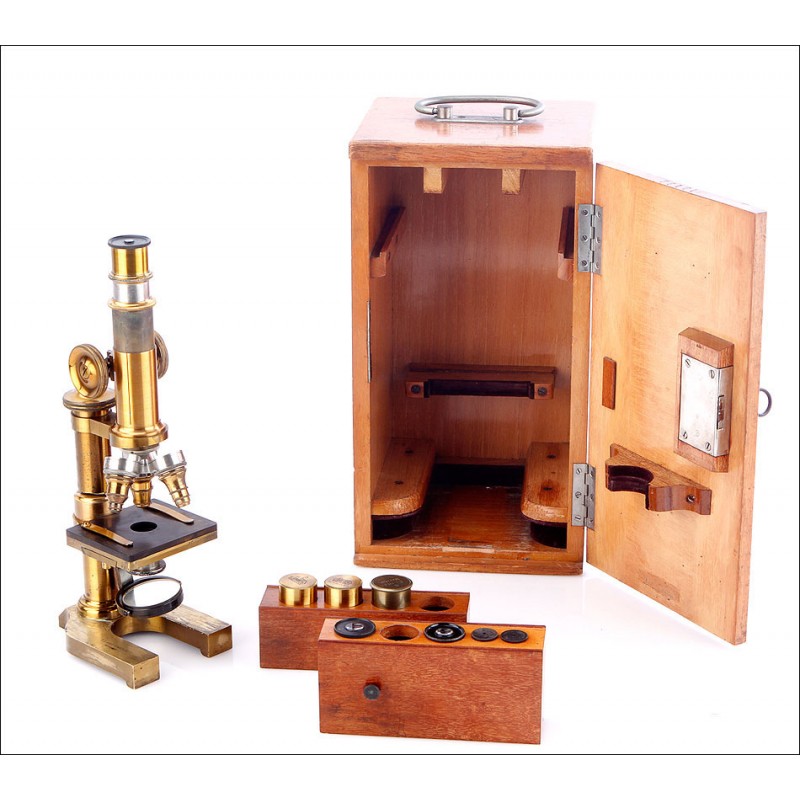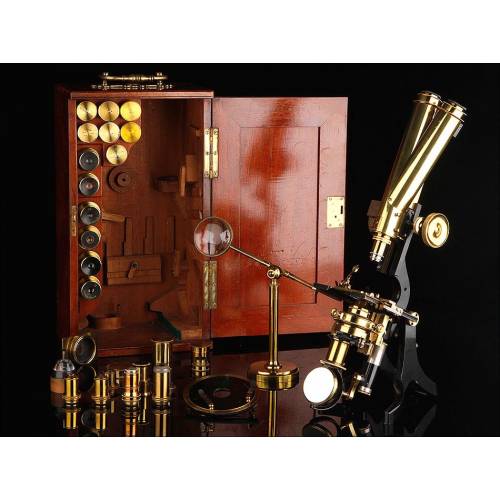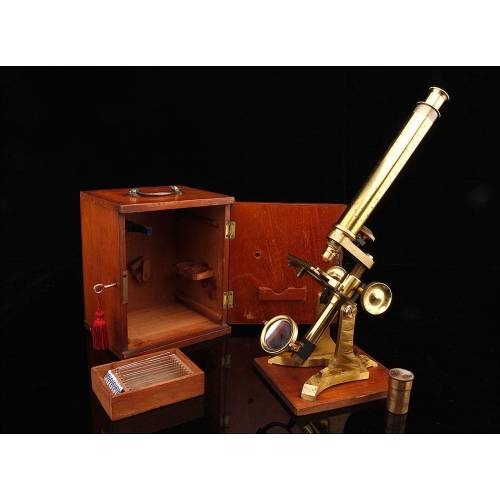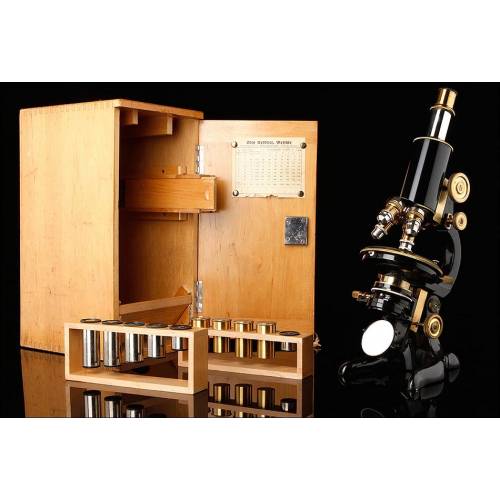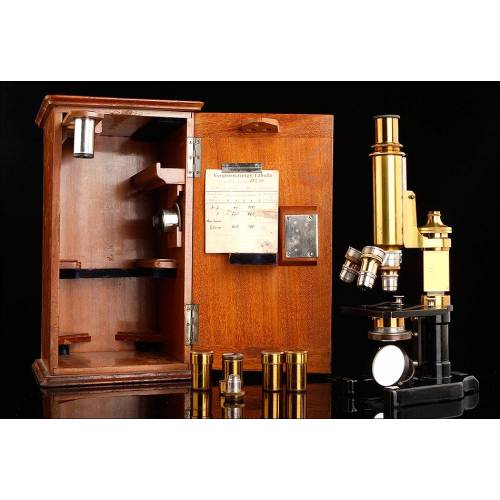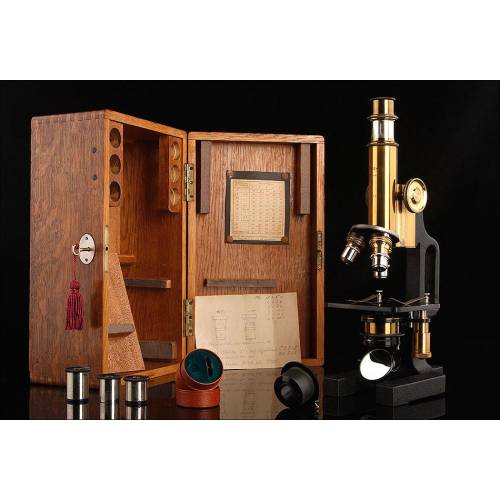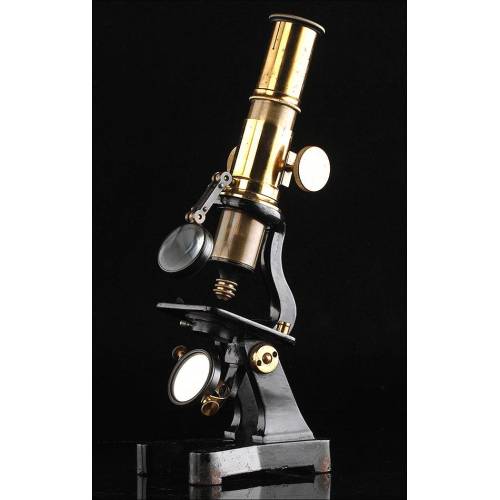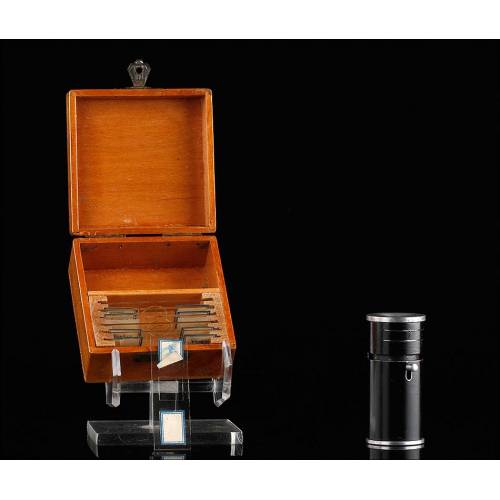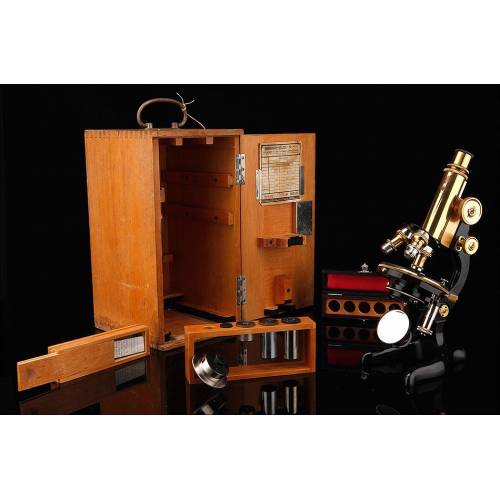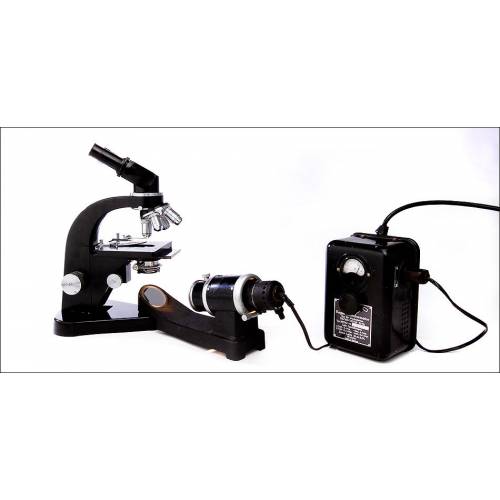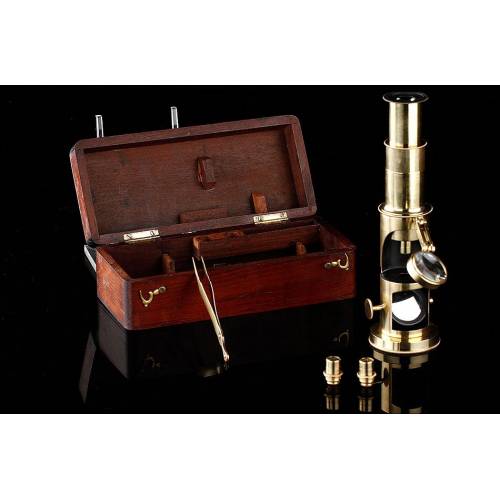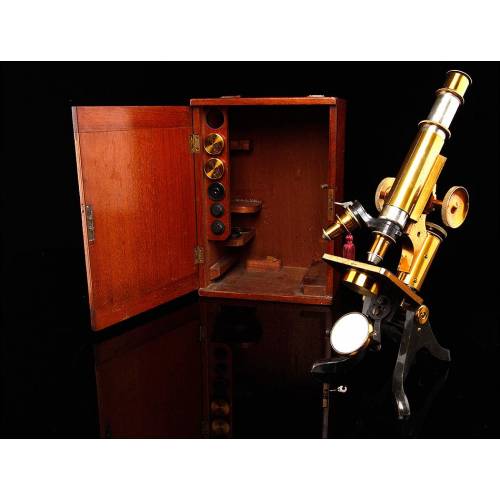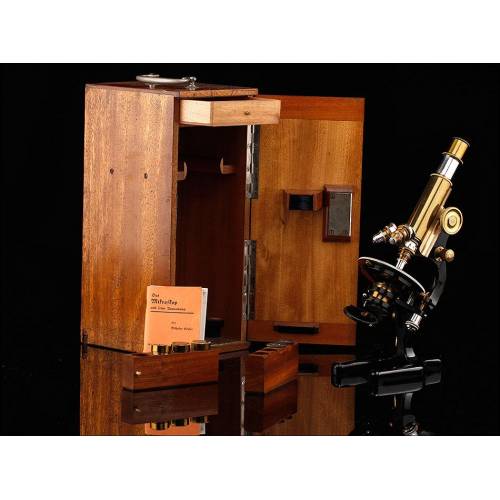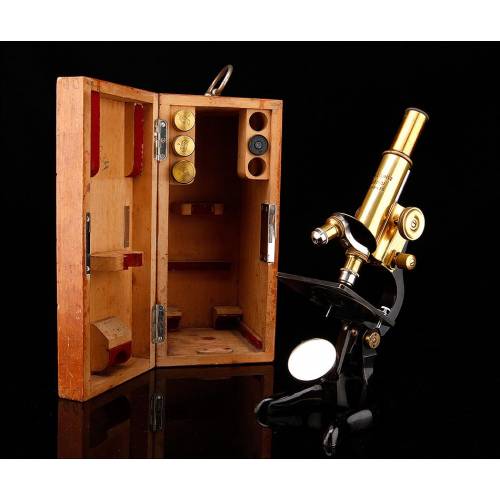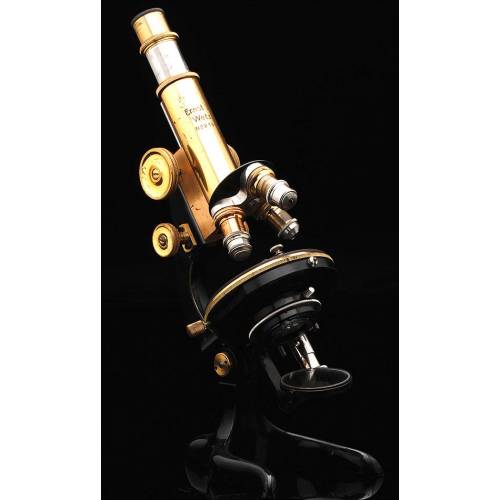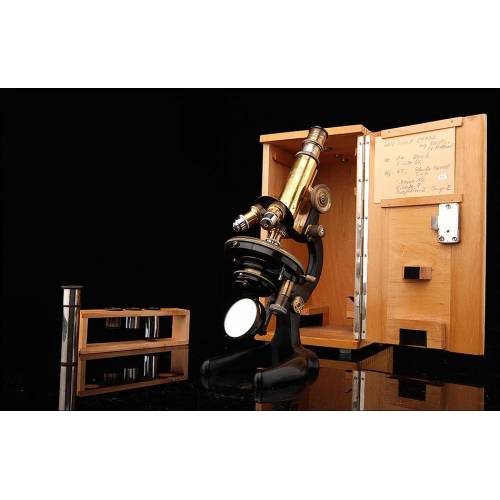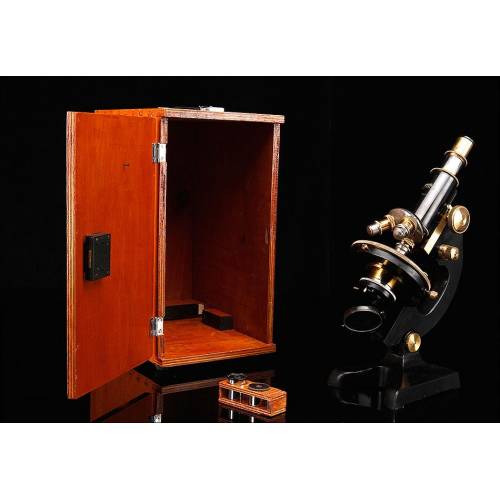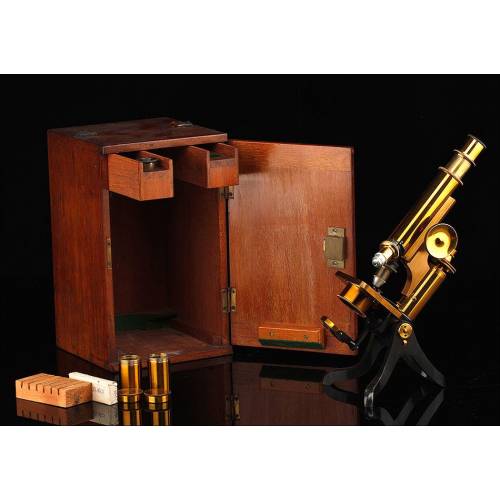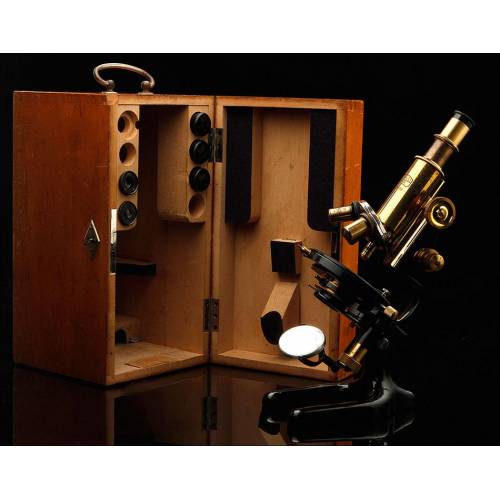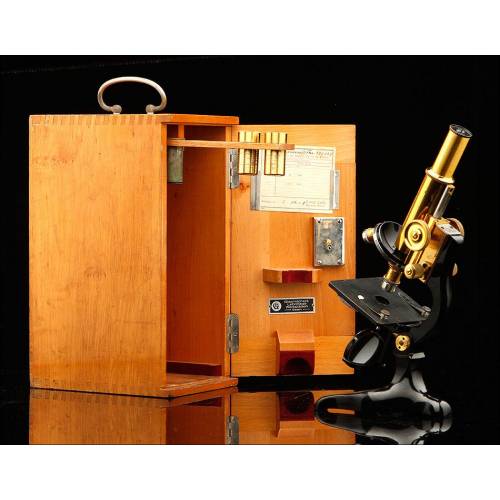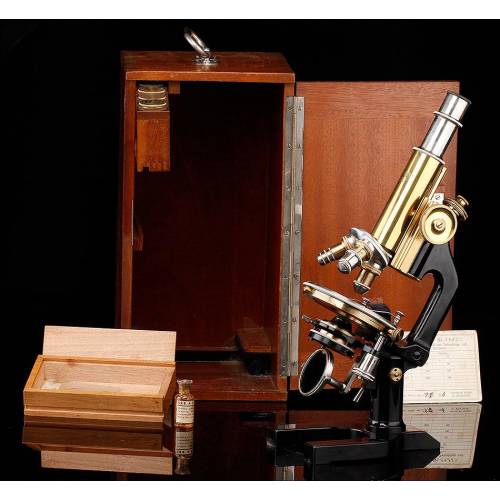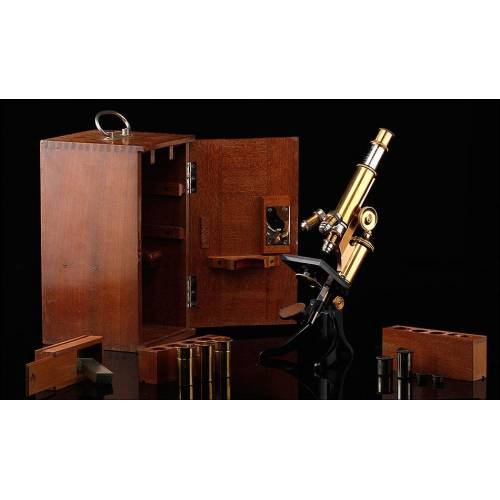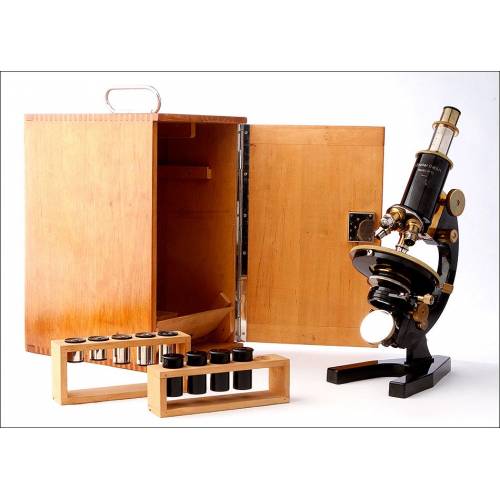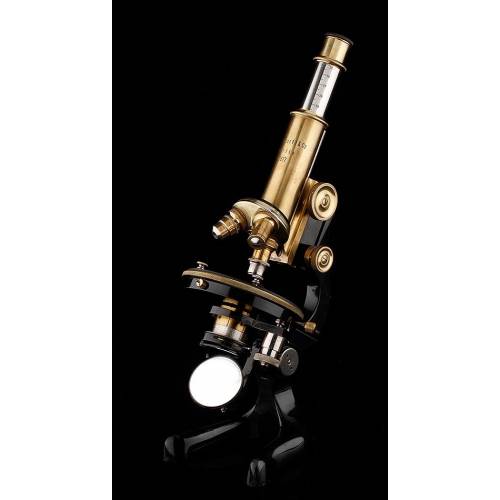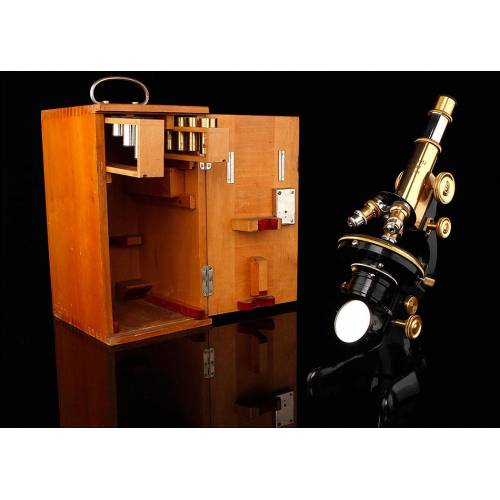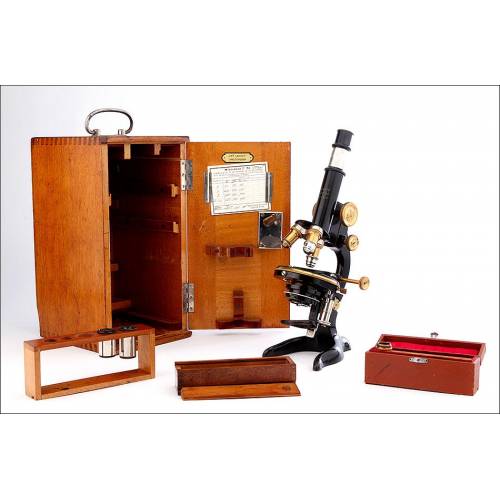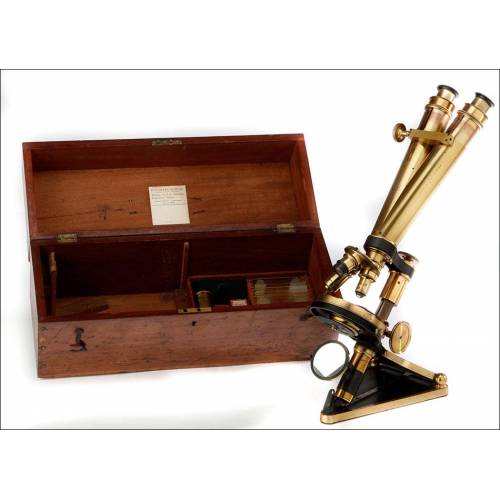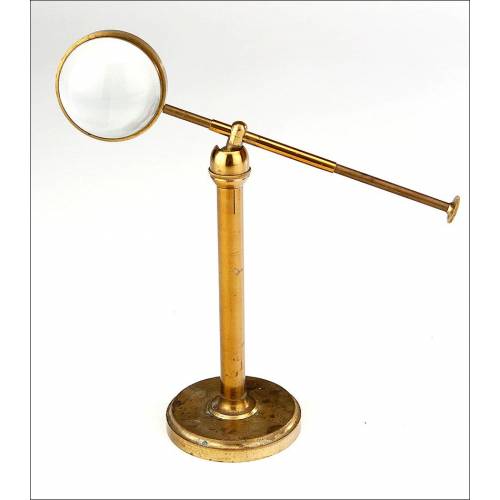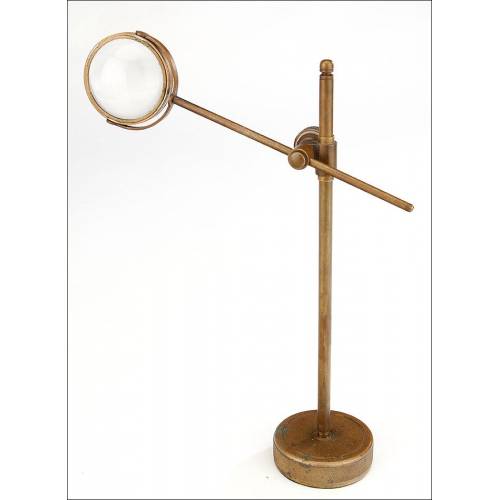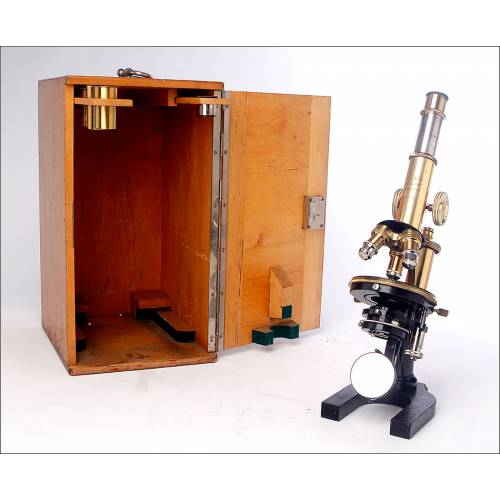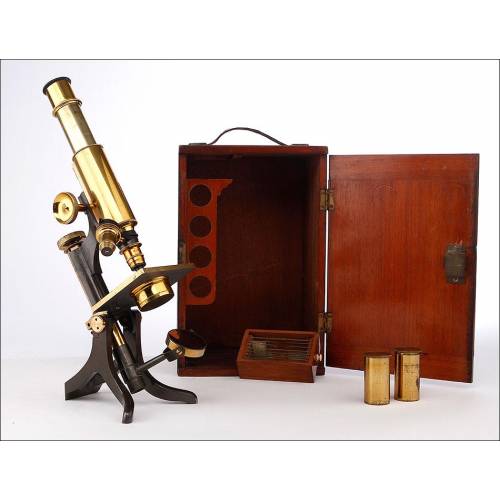B-994
Antique E. Leitz Wetzlar Microscope with Case. Germany, 1889
Antique E. Leitz Wetzlar microscope. Leitz Wetzlar late 19th century. In original case with accessories.
Sold!
Amazing antique E. Leitz Wetzlar microscope with a lovely old-time design and in good condition. The microscope mounts a three-lens revolving nosepiece and is in working order, so it can still be used to watch samples. It is dated in 1889 and comes from Germany. It comes in its original mahogany wooden case; the lock and the key are well preserved and work fine. This magnificent scientific instrument comes with its original double mirror (in excellent condition), three lenses and three eyepieces; the lenses can be stored in their respective brass canisters. The microscope is made of golden brass and silvery metal; the brass preserves the original transparent lacquered finish. Al the equipments component parts and pieces are original from the period and move fluidly. The horseshoe base bears the manufacturers name, E. Leitz Wetzlar, and the serial number Nº 40482 engraved in the metal. This number is also engraved in the edge of the cases door; this indicates that the wooden case was specifically made to store this precise microscope. The case itself is made of solid mahogany wood, remains in great condition and preserves the original satin finish. Inside there are two removable wooden supports to store the lenses and the eyepiece. A historic and timeless item, this amazing antique E. Leitz Wetlzar microscope is a real museum piece full of charm and beauty. Medidas: Ancho: 43 in / 11 cm. Alto: 11.8 in / 30 cm.Ernst Leitz Wetzlar History The beginnings of the famous optic material manufacturing company named Ernst Leitz Wetzlar can be found in the first half of the 19th century, when the mechanic and selft-taught mathematician Carl Kellner founded the Carl Kellner Optisches Institut in Wetlzar, Germany. After his early death his widow maintained the business, and in 1864 the mechanical engineer Ernst Leitz entered the company. Just five years later, Leitz took control of the firm and changed its name for Ernst Leitz Wetzlar. Leitz led the company to success after introducing improvements such as serial production, raising sales volume rapidly after 1871. Leitz microscopes included technical improvements that increased their quality; by the late 19th century the company already had a worldwide reputation. Ernst Leitz died in 1920 and the leadership of the firm passed to his son. As well as for their microscopes and optic material, Leitz became hugely famous for their famous Leica cameras (abbreviation of Leitz Camera).

